The Differences Between Soba And Udon: Know Your Noodles In Japan

Soba, made of buckwheat, and udon, made of wheat, are Japanese noodles known internationally. This article explains the differences between these noodles, how they are made, what they're usually eaten with, and how to eat them. You can enjoy Japanese noodles at any time of the year!
Soba? Udon? What’s The Difference?
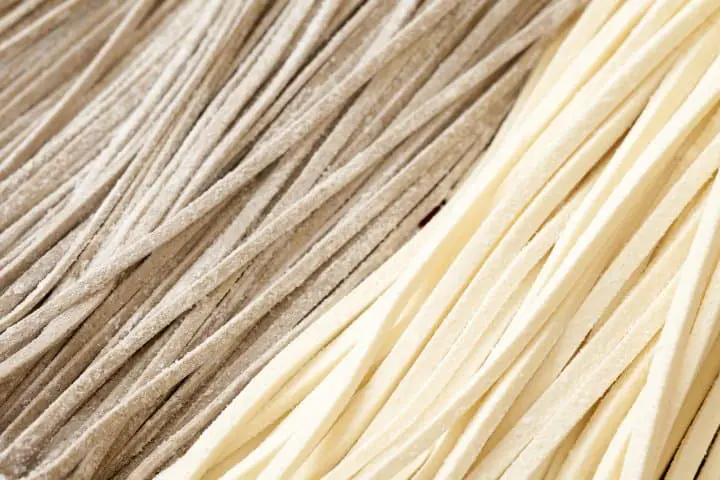
Soba (right) and udon (left). Photo by Pixta
Soba and udon are the main two types of noodles found in numerous dishes in Japan. Though the Japanese are very well-acquainted with them, travelers may not be so clear about how these noodles differ from one another.
We’ll introduce you to these two fascinating noodle varieties, which are very different in terms of flavor and how they are eaten.
Soba - the Iconic Buckwheat Noodle Japanese Dish

Soba, which appears on Japanese dining tables regardless of the season, is a dish that tells a story about Japanese cuisine. In recent years, it has gained attention for its utility as health food, its effectiveness for people on diets, and its energy-restoring properties.

Soba is a highly nutritious noodle dish that appears on many first-class Japanese restaurant menus, but it’s extremely simple to make. Just add water and wheat flour to buckwheat flour (ground buckwheat), knead it into a thin dough, then slice the dough into long, thin cylindrical strips about 1-2 cm wide. Once the noodles are done, they are boiled in hot water. They can then be eaten with cold or hot soup, depending on the season and personal preferences.

The soup that goes along with soba is called soba-tsuyu or soba-jiru. Soba-tsuyu is made from soy sauce, mirin (sweet rice wine) and dashi stock made from kombu seaweed and shaved bonito flakes, among other ingredients. The interplay of flavors and rich taste of the broth is very appealing.
Udon - Wheat Noodles Beloved by All Generations
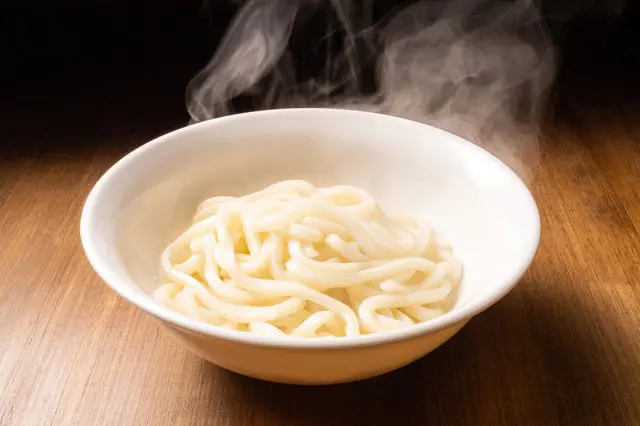
Just like soba, udon has long been a favorite of Japanese people. Udon noodles are characteristically glossy and pure white. Wheat flour and saltwater are kneaded into dough, then cut into long thin noodles. Finally, they are cooked in boiling water. Udon is known for being easy on the stomach.
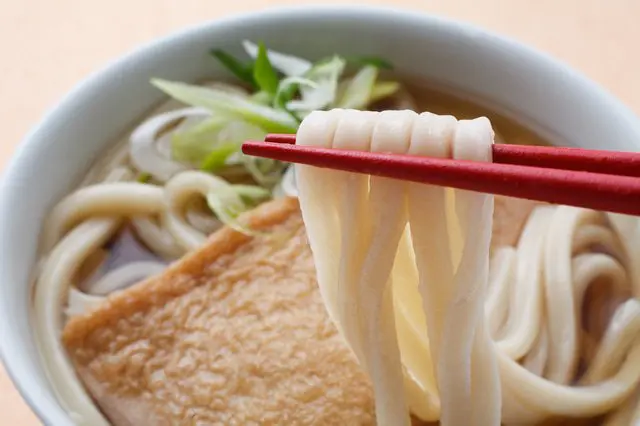
At Japanese restaurants serving soba and udon, you will discover all kinds of noodle dishes. The most representative dishes are zaru-soba/udon - noodles on a knit bamboo platter, dipped in a tsuyu sauce served in a separate container - and kake-soba/udon, noodles placed in a bowl then covered in hot soup .

Other varieties include tanuki-soba/udon, which is topped with age-tama, or deep-fried balls of wheat flour; kitsune-soba/udon, topped with abura-age, or sheets of thin-sliced tofu flavored with soy sauce and sugar, which are then fried in oil; and tempura-soba/tempura-udon, which is topped with batter-fried vegetables or seafood, among many others.

Other unusual yet popular combinations include curry soba/udon; the refreshing summer dish tororo soba/tororo udon, eaten with grated yam; the sansai soba/udon, eaten with foraged vegetables; and kama-age udon, boiled noodles mixed together with raw egg and soy sauce. Even if the noodles are the same, changing the toppings lends the soba (or udon) a wholly new flavor to enjoy.
A Hot Dish for a Cold Winter: How to Eat Warm Soba and Udon
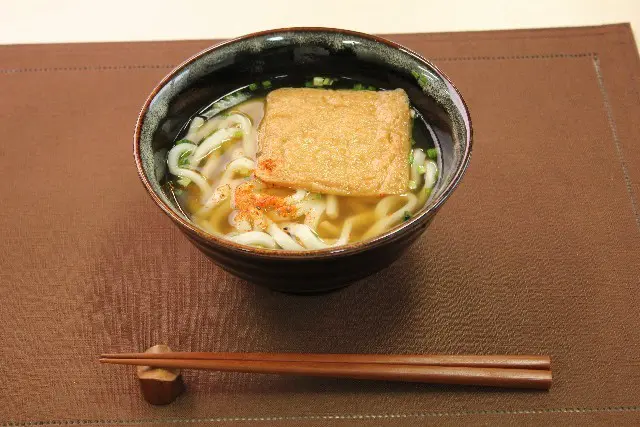
When eating hot soba or udon, hold the chopsticks in your dominant hand, grasp the noodles and bring them to your mouth. Try adding condiments like white and black sesame, spring onions, and shichimi spice to find the flavor that you like best. When eating tempura soba/udon, after you’ve enjoyed enough of the crispy texture of the tempura, soak the rest of the tempura in the broth and enjoy even more deliciousness.
Cool Off in Summer With Cold Noodles! How to Eat Cold Soba and Udon

When you order cold soba/udon, first add your preferred spices to the bowl containing your broth. After adding accents to the dashi’s flavor with onion, ginger and other seasonings, grasp the noodles with your chopsticks and dunk them into the bowl of tsuyu. Once the broth has thoroughly coated the noodles, you’re ready to eat. In Japan, it’s thought that a true noodle connoisseur should avoid drenching all of the soba/udon at once, and dip them into the broth little by little.
If you’re eating soba, it’s also customary to take the soba water in which the noodles were boiled, add it to the tsuyu, and drink it after the meal.
Pay Particular Attention When Eating Soba! About Soba Allergies
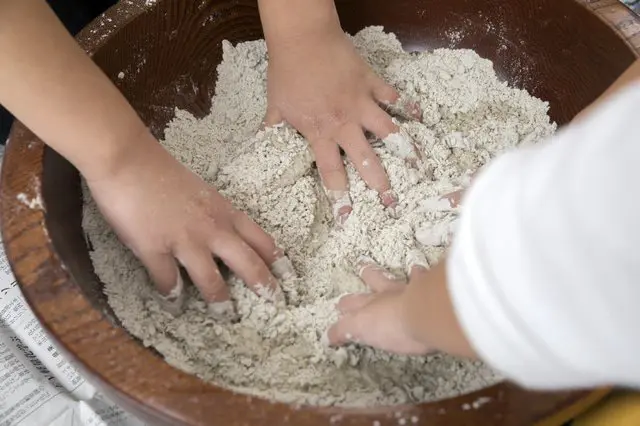
Soba is said to be delicious and healthy, but buckwheat can also induce allergic reactions in some people. If you feel pain or swelling in the mouth after eating soba, then develop nausea and diarrhea as more time passes, there is the risk that you could be suffering from anaphylactic shock, which is extremely serious. If you’re from a country with no culture of eating buckwheat and feel even a little mouth discomfort while eating soba, stop eating, immediately drink a large quantity of water, or force yourself to throw up what you’ve eaten.
All image by Pixta
94年生まれ。神戸出身、東京在住。アメリカからの帰国子女。旅、アート、食が大好きな大学生。


































![[2026] Top 5 Strawberry Picking Spots in Tokushima, Naruto| Farms and Access Guide for January to May](https://resources.matcha-jp.com/resize/720x2000/2025/03/06-227165.webp)



